How Much Does it Cost to Replace a Kitchen Faucet?
August 05, 2021
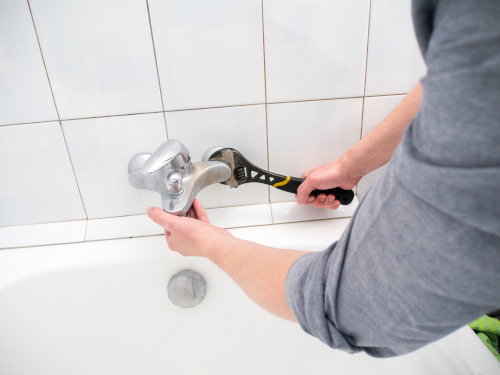
Whether you’re installing a faucet in a new home or replacing your old one, the first thing you’ll want to know is how much the job will cost.
In New York, you can expect to pay anywhere from $350 to $750+ for a new faucet. The cost can go up or down depending on the following factors:
- The faucet you choose
- Labor considerations
- The plumber you hire
Let’s take a closer look at each of these factors, so you know what to expect when you hire a plumber to install the new faucet.
Live in the NYC metro area? Want a faucet installation estimate from a professional? Contact Ranshaw today, and we’ll send one of our plumbers to your home to provide you with a quote for the job.
Cost factor #1: The faucet you choose
The first factor that will determine the cost of your faucet replacement is the price of the faucet itself. Faucets vary in price depending on their design, finish and valve type. We’ll look at each of these considerations below.
The design of the faucet
Below are the 3 most common faucet designs, from least costly to most expensive:
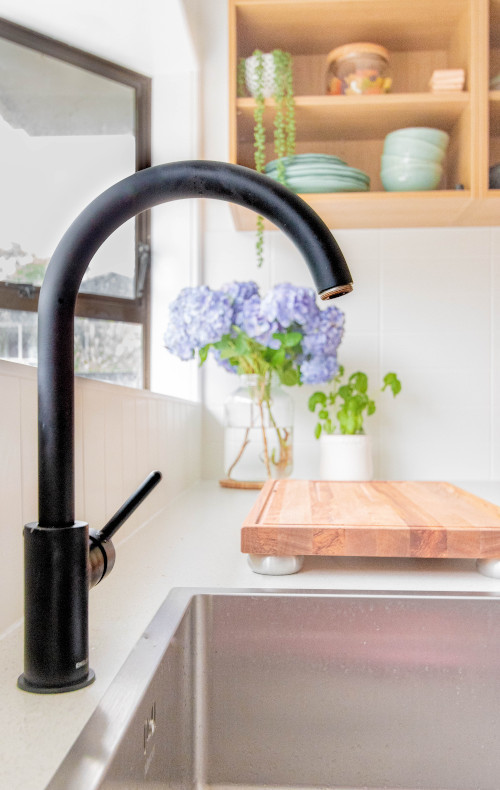
single-handle faucet
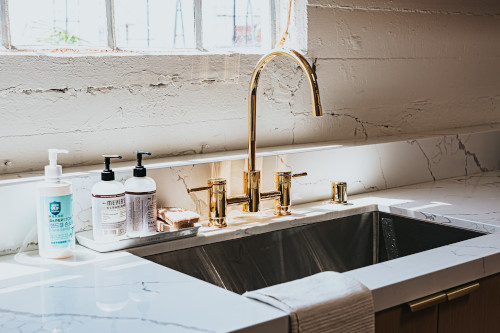
double-handle faucet
- Single- or double-handle faucet: The least expensive and most commonly used type of faucet has one or two handles to control water flow and temperature.
- Pull-down or pull-out faucets: These mid-priced faucets have a detachable spray head that you can pull out or down, making it easier to rinse dishes or clean the sink.
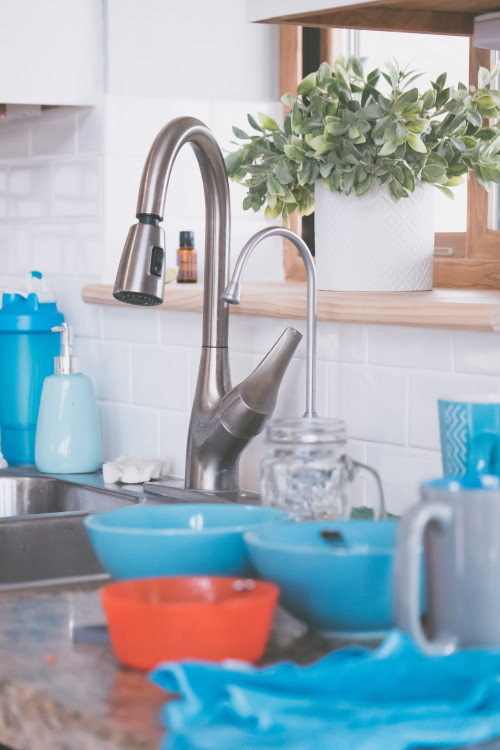
pull-down faucet
- Touchless faucets: The most expensive faucet design allows you to wave your hand over a motion sensor to turn the water on. A dial/handle or hot/cold sensors on the side of the faucet control the temperature.
Note: A plumber can help you determine which type of faucet will fit and work best with your current sink configuration.
The finish of the faucet
Most faucets manufactured today are made of brass or stainless steel, though some less expensive models with zinc alloy. Typically, contractors recommend brass as the best type of faucet material because it is highly durable.
Faucet manufacturers apply a finish (metal coating) over the base material of the faucet. The finish makes the faucet look aesthetically pleasing and prevents the faucet from tarnishing. Premium or custom finishes will cost more, but they can also help you achieve your aesthetic vision for the kitchen.
Below are the four most common kitchen faucet finishes, from least to most expensive:
Chrome (polished or brushed)
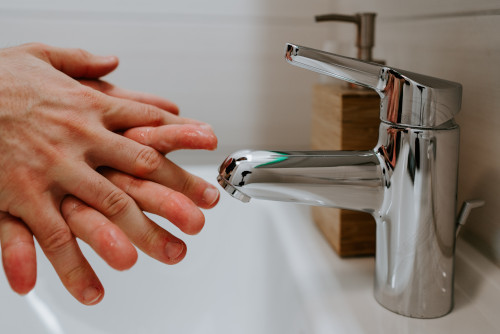
Chrome finish faucet
Nickel (brushed, satin or stainless steel)
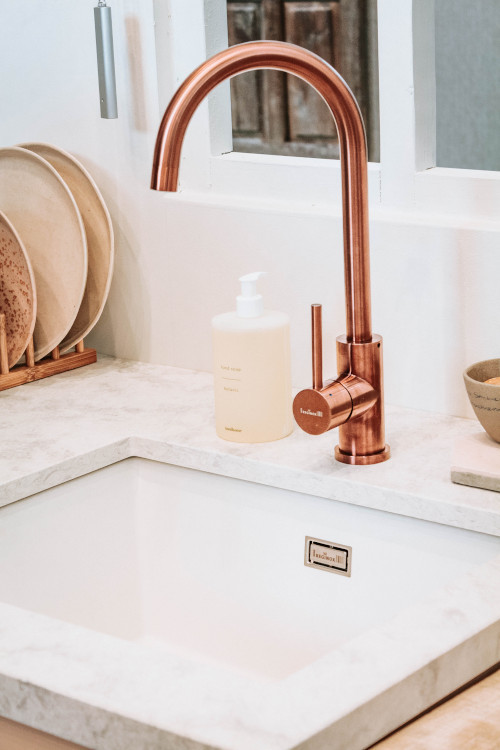
Nickel finish faucet
Brass (polished or satin)
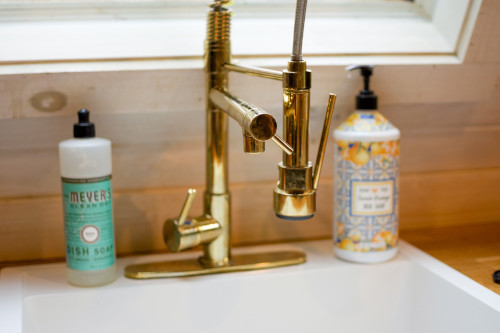
Brass finish faucet
Bronze (oiled or rubbed)
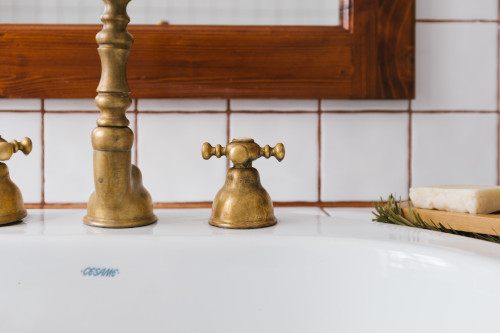
Bronze finish faucet
The faucet valve type
Faucet valves create a water-tight seal to prevent leakage and help control the flow and temperature of the water. Some valves are more durable and offer greater flow/temperature control, but they also raise the faucet installation cost.
Below are the most common faucet valve types, from least expensive to most expensive:
- Compression valve: A compression valve consists of a simple screw stem and a rubber compression washer. As the stem is raised, the washer opens the flow of water. Compression valves are inexpensive, but the rubber washer can wear out over time, causing water to leak from the faucet. Luckily, the washer and its replacements are affordable.
- Ball valve: Commonly found in single-handle faucets, ball valves use steel, rotating balls to control the faucet's water flow. Ball valves contain many small parts, which can wear out over time and create leaks in the faucet. Because of their complexity, ball valves are more expensive to repair compared to compression valves.
- Cartridge valve: A cartridge valve consists of a small cylinder that controls the flow and temperature of the water and a rubber O-ring that prevents leaking. Cartridge valves are less prone to leaks than ball valves and are used in both single- or double-handled faucets.
- Ceramic disc valve: Ceramic disc valves use two rotating discs to control water flow and temperature and are the newest valve type used in faucets today. They are highly durable and resistant to leaks, but they also raise the cost of the faucet.
Cost factor #2: Labor considerations
When a plumber calculates a quote to replace your faucet, they will consider the time needed to complete the job and the overall complexity of the project.
Time-consuming or difficult replacements will naturally be more expensive. Some scenarios that will raise the cost of the installation include:
- Removing a rusted or badly damaged faucet: When replacing a faucet, the plumber will need to remove the old faucet before installing a new one. If your old faucet is severely rusted into the sink, the plumber may need to saw it out, increasing the labor cost for the project.
- Making adjustments to the sink: A plumber may need to adjust your sink to install the new faucet. Complex or time-consuming alterations will increase the labor cost.
- Readjusting or altering the water line: To accommodate the new faucet, the plumber may need to readjust or change the water line, which raises the replacement cost.
Cost factor #3: The plumber you hire
There is no shortage of plumbers in the Queens area. However, not all plumbers have the experience or skills needed for faucet replacements. As a general rule-of-thumb, more experienced plumbers will charge more to replace your faucet, but they will provide more high-quality and reliable work.
Because you'll use your new faucet every day, we recommend investing in a high-quality, experienced plumber to do the job. That way, you can rest assured that the job completion is high-quality, and you can enjoy your new faucet for years to come.
Avoid less experienced plumbers who offer lower prices to replace your faucet. Inexperienced plumbers may rush through the job or cut corners, leading to problems in the future.
To ensure that your faucet is correctly installed, we recommend looking for a plumber who:
- Has been in business for 10+ years: That way, you’ll know they have sufficient experience to handle the job.
- Is licensed, bonded and insured: Hiring a licensed, bonded, and insured plumber will give you peace of mind that the job is safely and accurately completed.
- Offers upfront pricing and guarantees: Ensure the plumber provides you with an upfront estimate before any work begins. That way, there are no surprises when you get the final bill. Also, make sure the plumber offers a guarantee or warranty on their faucet replacement work if the faucet stops working after the installation.
- Has positive online reviews: You can gauge the overall quality of a plumber or plumbing company by reading reviews on sites such as Better Business Bureau and Google.
If the plumber meets the criteria above, chances are you’ll have an excellent overall experience working with them.
Ready for a trusted NYC plumber to replace your faucet?
Schedule serviceFor over 50 years, we’ve provided residents in the NYC metro area with high-quality plumbing service. Our plumbers have the experience and skills to help you choose and install the perfect faucet for your kitchen sink.
Learn more about what to expect when you hire Ranshaw by visiting our plumbing service overview page.
